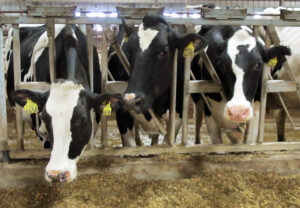The New Science the Plant-Based Industry Needs to Know
A new study shows that the plant based industry will need to address more than taste and prices to challenge meat. Image: Adobe
Image: Adobe
For decades, alternative protein companies — from stalwarts like Beyond Meat to pioneers of fresh-on-the-menu cultivated chicken — have been counting on a simple paradigm for disrupting the meat business. A strategy built on three objectives: price, taste and convenience. If meat alternative companies can create a product that is equally cheap, tasty and convenient to purchase as traditional meat, the thinking goes, people will swap out their beef for a more ethical and sustainable alternative. But a new paper is calling this theory into question.
Though based on decades of general market research of U.S. consumers, “this paradigm isn’t really founded in evidence,” argues Jacob Peacock, a researcher at a non-profit called Rethink Priorities. His most recent preprint study suggests alternative protein companies will need to do a lot more in order to displace conventional meat. But scientists say we have to reduce our meat consumption in order to avoid the damage caused by our current food system — climate pollution, animal suffering and undrinkable water, to name just a few examples — so it’s important to get this right.
The theory of price, taste and convenience has long been a food industry standard. All food companies research how well their products fare across these metrics (among many other factors), but the alternative protein industry really zeroed in on these three as a strategy for disrupting traditional meat.
The Good Food Institute (GFI), an alternative protein think tank and advocacy group, has long argued that price-taste-convenience are the three primary factors driving consumer eating choices. In a 2020 report that perhaps helped solidify this framework as a goal for the nascent alternative protein industry, the authors wrote that these factors are foundational for food choice, though at the time, even they pointed out that the theory was not all-encompassing.
Bruce Friedrich, founder and president of GFI, says that price and taste are “table stakes,” but that the industry will eventually need to tackle other factors once parity is achieved.
In the years that followed however, this theory has undergone expansion and modification, with many alt protein insiders coming to focus almost exclusively on this trilogy. Some even go as far to say that these three metrics “dictate consumer choice for just about everybody” and are enough to “succeed in ending animal farming.”
Well, it turns out that plant-based companies are inching closer to matching meat on many of these metrics, yet the market is still dominated by conventional meat.
In blind tests, some plant-based products rank as high as meat, some do even better.
In terms of price, parity is expected within a few years in the U.S. and other Western European countries. In the Netherlands, they’re already cheaper.
In blind taste tests, some forms of plant burgers actually are rated as slightly tastier than meat (although the meat burgers weren’t salted, which may have skewed results). And by most metrics, cultivated meat has a nearly identical taste to slaughter-based meat.
While convenience isn’t easy to measure, it’s fair to say that most people living in big U.S. cities wouldn’t have trouble finding a meat alternative in their local supermarket. For people in food deserts, small towns or other countries, the trip to get a chicken-free nugget might be a bit trickier, but overall, plant-based foods are quite prevalent. So then, how is the plant-based meat industry doing in its bid to displace traditional meat?
Despite these breakthroughs in price, taste and convenience, the meat alternative market has plateaued. Plant-based meat sales barely budged from 2021 to 2022, and meat consumption is only decreasing in Germany. So what gives? Well, it turns out that displacing meat may not be that simple.
It’s not that price, taste and convenience don’t matter. They do, of course, but these factors are far from a holy grail, and are probably not enough to sway the entire population.
The price, taste and convenience framework dates back to consumer surveys aiming to understand what matters to shoppers when they make their grocery purchases. But the research was never designed to test what would persuade a consumer to buy an entirely new type of food, let alone one as intrinsic to many cultural traditions as meat.
“If you examine those studies more closely,” says Peacock, “the first thing that jumps out is that they were never intended to test this sort of theory at all.” When choosing between, say, brands of sandwich bread, the thinking is very different from the calculus of how you get consumers to fundamentally change what’s at the center of their plate.
Take, for example, the factor of taste. Possibly the most important of the trifecta, alternative protein companies have been taking it very seriously, and they often succeed. In blind tests, some plant-based products rank as high as meat, some do even better.
The problem is those taste tests don’t necessarily translate to sales. Each package of plant-based meat comes with branding, nutritional information and product imagery — all of which have an impact on shoppers. Its location in the grocery store matters too — will it be tucked away in a corner? Or sold next to meat — there’s a reason Beyond campaigned for the latter. And what the customer already knows about the product matters too — did she happen to see meat industry campaigns against plant-based products? These all have an impact on what the consumer actually purchases.
Even if plant-based meat makers succeed in making a tasty product — and often they do — the category of meat alternatives is subject to a whole host of other socio-cultural phenomena that just don’t apply to other types of food, says Peacock.
When studies do try to approximate more real-world conditions, Beyond Burger and hybrid meat-vegetable burgers tend to drop off a bit in consumer ratings — sometimes leading to unexpected results.
If plant-based advocates want to get larger swaths of consumers to make the switch, they have to address other factors too.
In a study in a UCLA dining hall, experimenters allowed students to choose between a meat burrito and an Impossible Foods plant-based burrito — both free, both convenient and, here, the plant-based option is one that’s consistently rated one of the tastiest. Yet only about a quarter of students chose the Impossible burrito, which isn’t bad but a large portion of these students were likely already choosing veggie-based options anyway.
When we look at consumer experiments and choice scenarios from researchers across a wide range of countries, there’s quite a lot of variability in the results. But on average, it’s only around 28 percent of consumers who choose plant-based meat.
Not everyone agrees with Peacock’s premise. Chris Bryant, another social science researcher of alternative proteins, says this hypothesis is “a narrow interpretation,” arguing that price, taste and convenience are initial steps, not the end goal.
There’s no doubt that price, taste, and convenience are important — Peacock, Bryant and Friedrich all agree. But on their own, they may not be enough, this research suggests. For Friedrich’s part, however, they’re a starting point, and a necessary one at that — “if we don’t compete on price and taste, the products will stay niche, and meat consumption will continue to grow,” he tells Sentient Media.
If plant-based advocates want to get larger swaths of consumers to make the switch, they have to address other factors too, including brand recognition, healthfulness, sustainability and the ability to recognize the ingredient list in the product.
The meat industry has been running a pretty effective campaign on two of these — nutrition and ingredient familiarity. Though plant-based companies have started fighting back — take Beyond Meat’s new ad highlighting the family farmers that produce their foods — it will likely take more than a few campaigns to undo the widespread acceptance of meat as the norm.
According to polls, the public is split on whether plant-based meat is healthier than animal-based, with about 45 percent saying plant-based is inherently healthier, although this number has been going down over time. Some research indicates that long ingredient lists aren’t actually that harmful to plant-based meat branding. But consumers aren’t likely to unanimously agree that plant-based patties are equally nutritious anytime soon, despite the health research that shows conventional meat and plant-based are fairly equivalent.
The newness of the industry may explain why this is an especially challenging hurdle to overcome. “Some people are afraid of these unfamiliar ingredients. They’re uncomfortable with novel production strategies like cultured meat or cultivated meat,” says Peacock, characterizing these ideas as ‘neophobia’, a fear or dislike of novel foods.
Friedrich acknowledges consumers don’t understand plant-based protein’s health benefits, which do vary, depending on the product. “We have some messaging challenges to tackle,” he says. Still, over time, people who have heard more about plant-based products are more likely to want to buy them, suggesting that neophobia can be overcome.
Still, there is yet another, perhaps even more complex factor to unravel — most people have strong cultural associations with meat. Social norms have been encouraging the consumption of meat for all of human history — there are holidays and family traditions centered around meat in many world cultures.
The bottom line is there are many deeply complex factors at work here, and more robust research into what will in fact get people to change their eating habits is sorely needed.
Ultimately, no one knows for sure how to reduce meat consumption, and it’s likely there isn’t a single answer anyway.
It’s possible that what’s needed more is an even bigger curveball. If meat reduction is the goal — and, again, it’s necessary to meet our climate goals and spare billions of farm animals from suffering — “maybe we don’t need to focus on emulating animal-based meat,” argues Peacock. Why not create and market a product that’s better than slaughter-based meat?
“It’s just assumed, oh, you know, if only we had an identical thing that was different in key ways, everyone would just switch over,” says Peacock, “when psychologically, I just don’t think that’s well supported.”
Alternative protein companies can create foods that go beyond replication. For instance, cultivated meat pet food can create rabbit and mouse meat — ancestral prey of cats and dogs — that aren’t found in traditional brands. Or more creative flavorings, like the super-fatty Indulgent Burger or pre-spiced chicken pieces. Or an innately healthier product, like spirulina-based nuggets.
Peacock himself is a fan of integrating natural plant-based foods — based on whole proteins like lentils, nuts and soy — into the larger food landscape. These ingredients can at least help overcome the challenge of familiarity — after all, who can’t name the ingredients of a black bean burrito or hasn’t heard of a lentil curry — though fans of so-called “vegan junk food” might point out that lentils aren’t exactly taking a nation of fast food eaters by storm.
Ultimately, no one knows for sure how to reduce meat consumption, and it’s likely there isn’t a single answer anyway. Different groups of people think about meat in very different ways. A more diverse set of options — including whole foods plant-based fare, meat imitations and alternative proteins that set themselves apart in unique ways — would represent a wider set of alternatives, which might go a long way in getting people to finally change their habits.
Your support matters…Independent journalism is under threat and overshadowed by heavily funded mainstream media.
You can help level the playing field. Become a member.
Your tax-deductible contribution keeps us digging beneath the headlines to give you thought-provoking, investigative reporting and analysis that unearths what's really happening- without compromise.
Give today to support our courageous, independent journalists.






First a vegetarian, and now a vegan for a long time, I found this article timely and interesting. What I see looking out at the sea of meat eating and destructive farming practices to support the cruelty and environmental destruction that comes along with the conumption of animals for food is a devil-may-care attitude. Masses of people have been schooled in thinking that consumption of meat is a devine right that has been socially sanctioned....
First a vegetarian, and now a vegan for a long time, I found this article timely and interesting. What I see looking out at the sea of meat eating and destructive farming practices to support the cruelty and environmental destruction that comes along with the conumption of animals for food is a devil-may-care attitude. Masses of people have been schooled in thinking that consumption of meat is a devine right that has been socially sanctioned. Environmentalists who dare to report of the viciousness of the meat industry face incredible penalties. I’ve seen meat eaters at our dinner table turn their noses up at delicious vegan dishes punctuating their distaste for meat substitutes with a scowling mockery of our food. If people believe it is their God-given right to consume meat, then price, taste, and convenience won’t mean very much to them.